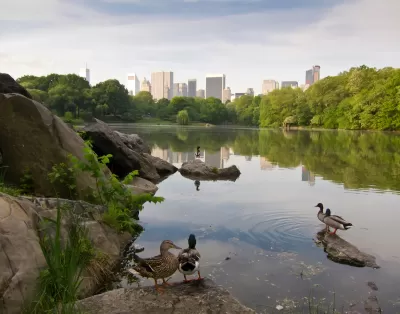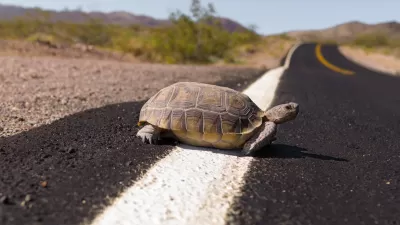A wide-ranging research study highlights the various qualities that make animal species living in urban environments thrive—and how biodiversity improves the health of our cities.

New research from the University of Melbourne identifies four distinct sets of traits that help urban wildlife adapt and survive in environments that seem hostile to animals. Writing in Wired, Maria Paula Escobar-Tello describes the findings. “The researchers looked at four animal characteristics—diet, body size, mobility, and reproductive strategy—that can vary according to what a city has to offer and how flexible a species can be.”
The study, which compiled data from 379 global cities, found that animal species fell into different categories. Some, the “mobile generalists,” do keep their options for diet and resting places open and move around frequently as needed. Others, termed “central place foragers,” nest and sleep in the same place, but forage for food over a broad range.
Then there are the “site specialists,” the study adds. “Reptiles and amphibians adopt a different strategy again: Faced with scarcer food, higher vulnerability to predators, road accidents, and pollution, they respond to urbanization by specializing their diets, moving around smaller areas, and reducing the size of their clutches.”
Why is biodiversity important for cities at all? “Greater biodiversity provides knock-on benefits, what are known as ‘ecosystem services,’” the article explains. A greater diversity of species can maintain healthier ecosystems, from microorganisms that clean the soil to local wildlife that keep disease-spreading pests like mosquitoes in check. “If you look at the traits animals are adopting to survive in urban environments, you can see how cities could be modified to become more habitable to a wider variety of species.”
FULL STORY: Why Some Animals Thrive in Cities

Montreal Mall to Become 6,000 Housing Units
Place Versailles will be transformed into a mixed-use complex over the next 25 years.

Planetizen Federal Action Tracker
A weekly monitor of how Trump’s orders and actions are impacting planners and planning in America.

California High-Speed Rail's Plan to Right Itself
The railroad's new CEO thinks he can get the project back on track. The stars will need to align this summer.

Tenant Advocates: Rent Gouging Rampant After LA Wildfires
The Rent Brigade says it's found evidence of thousands of likely instances of rent gouging. In some cases, the landlords accused of exploiting the fires had made campaign donations to those responsible for enforcement.

Seattle’s Upzoning Plan is Ambitious, Light on Details
The city passed a ‘bare-bones’ framework to comply with state housing laws that paves the way for more middle housing, but the debate over how and where to build is just getting started.

DOJ Seeks to End USDOT Affirmative Action Program
The Disadvantaged Business Enterprise Program encouraged contracting with minority- and women-owned businesses in the transportation sector, where these groups are vastly underrepresented.
Urban Design for Planners 1: Software Tools
This six-course series explores essential urban design concepts using open source software and equips planners with the tools they need to participate fully in the urban design process.
Planning for Universal Design
Learn the tools for implementing Universal Design in planning regulations.
City of Camden Redevelopment Agency
City of Astoria
Transportation Research & Education Center (TREC) at Portland State University
City of Camden Redevelopment Agency
Municipality of Princeton (NJ)
Regional Transportation Commission of Southern Nevada





























